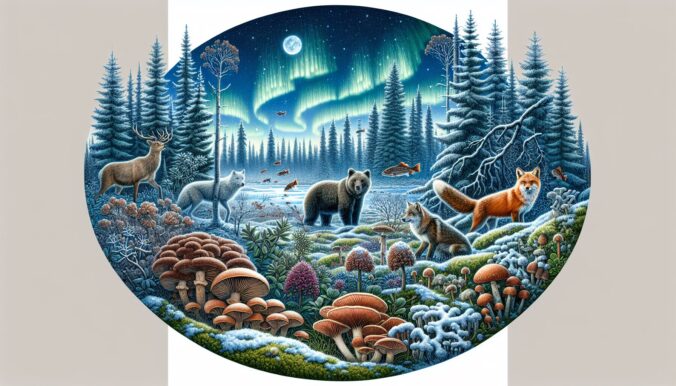Finland, known for its stunning landscapes and pristine natural beauty, is also home to a rich and diverse array of flora and fauna. From the vast boreal forests to the thousands of lakes dotting the landscape, Finland’s biodiversity is truly remarkable.
Introduction
With its unique position in the Northern Hemisphere, Finland experiences a range of habitats and ecosystems that support a wide variety of plant and animal species. From the Arctic tundra in the north to the forests and wetlands in the south, Finland’s diverse geography is a key factor in its rich biological diversity.
Flora
Finland is home to a wide range of plant species, with over 1,700 native vascular plant species found in the country. The boreal forests that cover much of Finland are dominated by coniferous trees such as pine, spruce, and birch, but also host a wide variety of understory plants and shrubs. In addition to the forests, Finland’s wetlands are also important habitats for plants, with species such as water lilies, cranberries, and sphagnum moss thriving in these unique ecosystems.
Fauna
Finland’s wildlife is just as diverse as its plant life, with a number of iconic species calling the country home. The Eurasian brown bear, the wolverine, and the grey wolf are just a few of the large mammals that roam the forests of Finland. In addition to these predators, Finland is also home to a number of herbivores such as reindeer, moose, and roe deer. Birdwatchers will also find plenty to see in Finland, with over 400 bird species recorded in the country, including the iconic whooper swan and the majestic golden eagle.
Threats to Biodiversity
Despite its rich biological diversity, Finland is not immune to the threats facing ecosystems around the world. Habitat loss due to logging, agriculture, and urban development is a major concern, particularly for species that rely on specific habitats such as old-growth forests or wetlands. Climate change is also a significant threat, with rising temperatures and changing precipitation patterns affecting the distribution and abundance of many plant and animal species.
Conservation Efforts
Fortunately, Finland has a long history of conservation efforts aimed at protecting its biodiversity. The country has established a network of national parks and nature reserves that cover a significant portion of its land area, providing protected habitats for a wide range of species. In addition, Finland is actively involved in international conservation initiatives such as the European Union’s Natura 2000 network, which aims to protect important habitats and species across Europe.
Conclusion
In conclusion, Finland’s rich biological diversity is a testament to the country’s unique geography and commitment to conservation. From the boreal forests to the wetlands, Finland’s ecosystems support a wide variety of plant and animal species, making it a truly remarkable place for nature lovers and conservationists alike. By continuing to protect and preserve its natural heritage, Finland can ensure that future generations will be able to enjoy the beauty and diversity of its landscapes for years to come.

